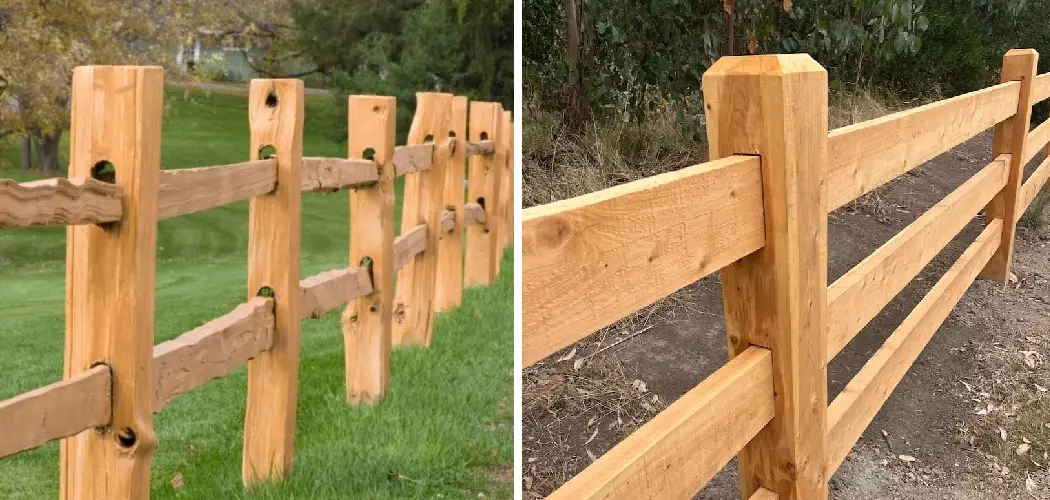Are you dealing with broken wooden fence rails? Wooden fences can be a great addition to any property but need regular maintenance and repair. Here we’ll discuss how to identify the type of damage your wooden fence rail has sustained and the steps you should take.
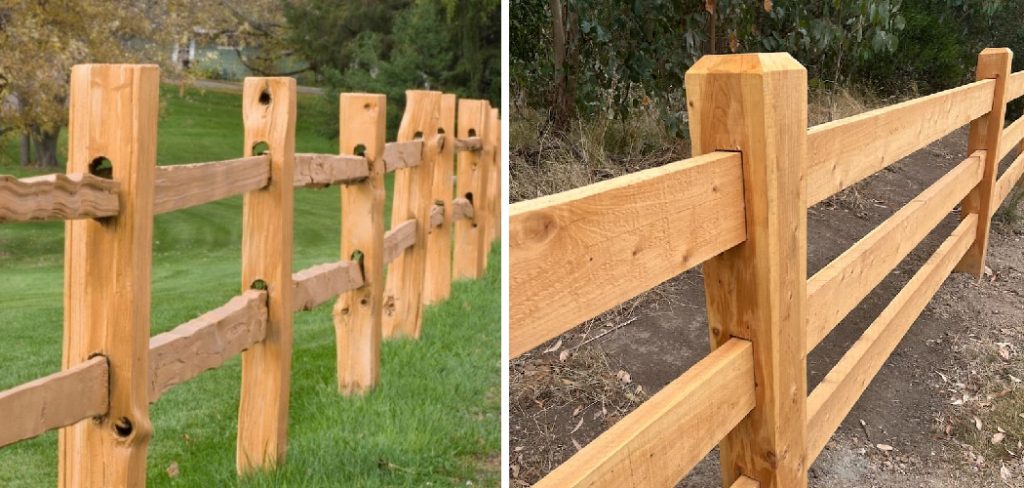
A fence serves many purposes but primarily provides security, privacy, and aesthetic enhancement to a home; however, wooden fence rails can sometimes become damaged due to natural wear and tear. Whether caused by the elements or animal interference, this damage can be quite problematic since it affects how your property looks and its structural integrity.
In this blog post, we will provide step-by-step instructions on how to repair wooden fence rails within just a few hours! So make sure that you grab all the materials needed before diving head first into this DIY project!
What Will You Need?
Before you begin, make sure that you have the following supplies ready:
- A hammer
- Nails (galvanized or stainless steel)
- A saw
- Wooden boards of the same width and length as your existing fence rails
- Protective gloves and eyewear
Before replacing the wooden fence rails, you will need to identify the source of damage and determine what needs to be done to fix it. If the rail is cracked or split, then it cannot simply be reattached with nails; instead, using a saw, cut out the damaged area and replace it with pieces from a board of similar size.
10 Easy Steps on How to Repair Wooden Fence Rails
Step 1. Removing the Damaged Area
Once you’ve gathered all the necessary materials, it’s time to start fixing the broken fence rail. Start by putting on your protective gloves and eyewear, then carefully remove the damaged area of the fence rail. Using a saw, cut out the section that needs to be replaced and any portions that are cracked or split.

Step 2. Measure and Cut Replacement Pieces
Measure the length and width of the removed section. Then, using a saw, cut two pieces from the replacement boards that are the same size as this area. If you’re dealing with an older fence rail, it may be necessary to sand down any rough or splintered edges in order for the pieces to fit properly.
Step 3. Attaching the Replacement Pieces
Once the replacement pieces have been successfully cut, it’s time to attach them to the fence rail. Using a hammer and galvanized or stainless steel nails, secure the two pieces together and place them on the existing fence rail. Ensure they are securely in place and the edges fit together nicely before hammering them down.
Step 4. Use a Clamp
To ensure that the two pieces of wood are securely attached, use a clamp to keep them in place. Then, using your hammer and nails, attach the two pieces to the fence rail until they are fully secured. If any holes are visible, use wood putty to cover them.
Step 5. Filling Gaps with Wood Putty or Caulk
Once you’ve attached the replacement pieces, you may need to fill any gaps with wood putty or caulking before moving on to the next step. You can find both of these products at your local home improvement store. Be careful not to use too much, as this can weaken the fence rail.
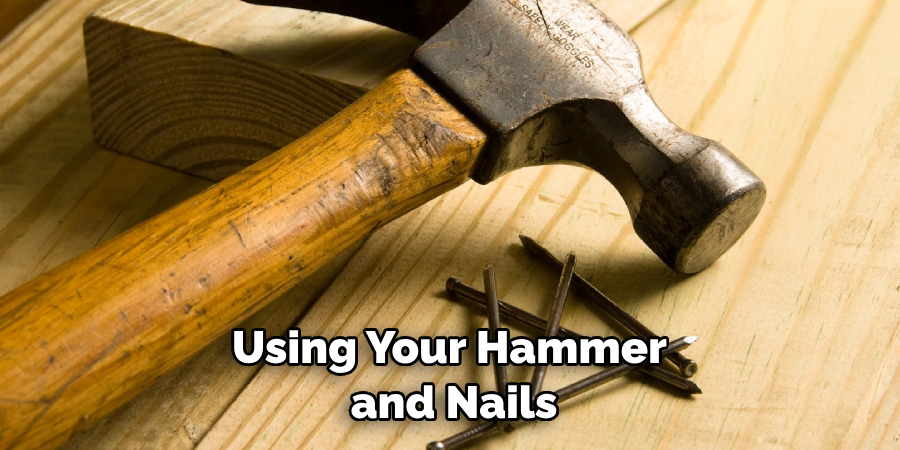
Step 6. Attach a Support Beam
To provide additional support, attach a new beam of wood slightly longer than the existing fence rail; this will help keep it sturdy and prevent it from snapping in the future. Use galvanized or stainless steel nails again to secure the beam. Ensure that it is tightly in position, and make sure to cover up any holes with wood putty.
Step 7. Sand Down the Area
Using a sanding block, sand down the area around the new beam and the existing fence rail in order to blend them together seamlessly. This will ensure that your fence looks as good as new when you’re finished! Now you can step back and admire your handiwork.
Step 8. Painting or Staining the Fence Rail
To make sure that your fence rail stays looking its best, you may want to paint or stain the wood afterwards. This will help protect it from damage due to weather conditions and make it look more aesthetically pleasing. Remember to use a protective sealant after painting or staining the fence rail.
Step 9. Check for Loose Nails
To make sure that your fence rail is fully secure, check for any loose nails and hammer them down if necessary. This will help ensure that the fence rail won’t shift or move over time due to wind or other elements. Keep an eye on the fence rail for any signs of movement, and if necessary, use additional nails to reinforce it.
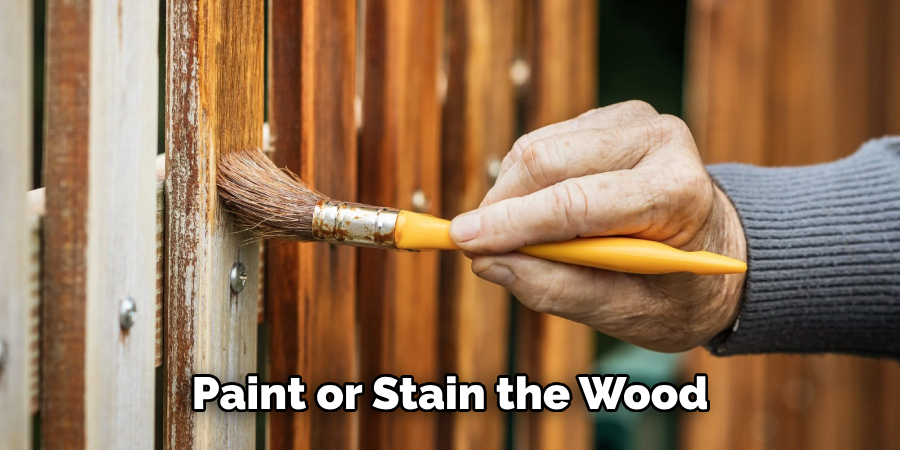
Step 10. Enjoy Your Newly Repaired Fence Rail!
Once you’ve finished all the steps mentioned above, your wooden fence rail should be as good as new! Now that you know how to repair wooden fence rails, you can rest assured that your fence will look great for years. Just make sure to check it periodically and repair any damage as soon as possible!
Wooden fences provide a timeless look and enhance the beauty of any property; however, regular maintenance is necessary in order to keep them in good condition. Following these steps, you can easily repair wooden fence rails and keep your fence looking its best!
5 Additional Tips and Tricks
- Repairing wooden fence rails can be a simple task. With the right tools and knowledge, you can make it an easy process.
- Make sure that you use screws or nails that are the correct size and type for the fence rail repair job. If they are too big or small, they could cause further damage to your fence rails.
- When repairing a fence rail, ensure the area around it is clean and free of debris or dirt. This will help to ensure that your repair job looks neat and professional.
- Use wood glue if necessary when making repairs on wooden fence rails. This helps create a stronger bond between the original piece of rail and the new repair piece.
- Regularly inspect your fence rails and make repairs as needed. This will help to keep them good condition and prevent future damage or decay. This extra maintenance step can save you money in the long run!
With these tips and tricks in mind, you are now ready to repair your wooden fence rails with ease. With the right tools and knowledge, you can have your fence rails looking good as new in no time!
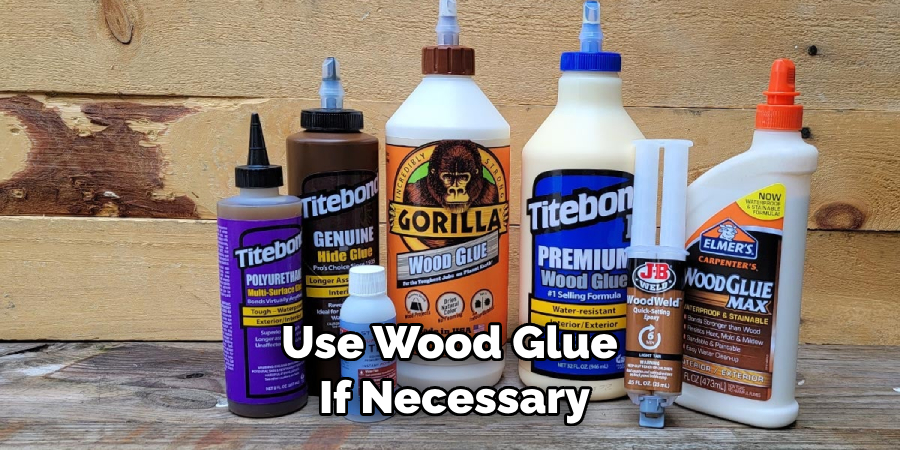
5 Things You Should Avoid
- Don’t use the wrong size or type of screws when repairing wooden fence rails. This could cause more damage and make your repair job look worse.
- Avoid using nails, as it may weaken the structure of the fence rail. Screws are better for a stronger, longer-lasting bond between pieces.
- Remember to clear away any dirt or debris that is around the repair area. This will help to ensure a neat and professional looking job.
- Refrain from using wood glue if necessary for your wooden fence rail repair job. This can be essential for creating a strong bond between pieces.
- Avoid neglecting regular maintenance of the fence rails, as this could lead to more serious damage in the future. Taking the time to inspect and repair as needed will save you money in the long run.
With these do’s and don’ts in mind, you are now ready to tackle your fence rail repair job confidently!
Some Frequently Asked Questions
1. What Kind of Wood for Fence Repair?
When repairing a wooden fence, using the same type of wood as the original is essential. Different types of wood have different strengths and weaknesses that can affect how long your repairs hold up over time. Use the same type of wood for your repair job to ensure a strong and lasting bond. Cedar, pine, redwood, and oak are all good options for fence repair.
If you need clarification on what type of wood was used in your fence, it is best to consult a professional. They can tell you what kind of wood should be used for the best results.
With these tips, you can now confidently tackle your wooden fence rail repairs!
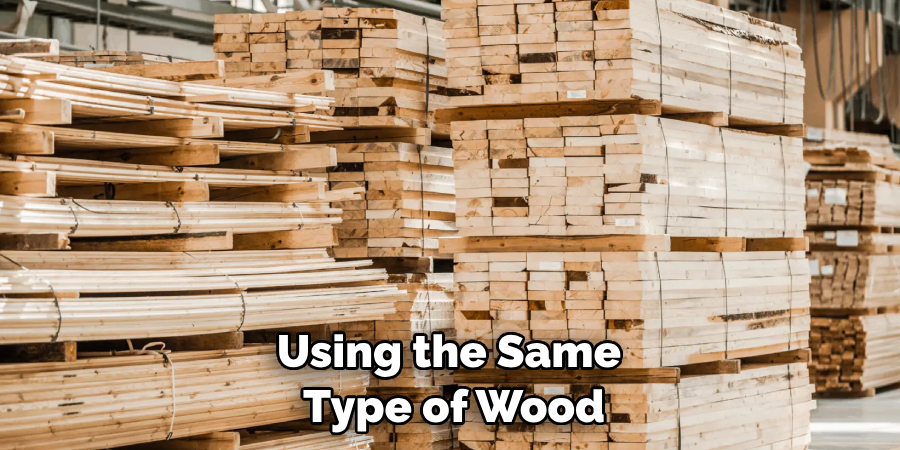
2. What is the Strongest Glue for Wood Repair?
When it comes to repairing a wooden fence rail, you want to ensure you have the strongest glue possible. Polyurethane glue is one of the best options for wood repair because it has an incredibly strong grip and creates a permanent bond. It also resists water and weathering, making it ideal for outdoor use.
However, if polyurethane glue isn’t available, you can use epoxy glue or a wood adhesive. Just be sure to read the instructions carefully and apply the glue according to their directions for the best results.
With these tips in mind, you can now make strong and lasting repairs to your wooden fence rails!
3. How Do You Fix a Hole in a Wood Fence?
If you have a hole in your wooden fence, the best way to repair it is with an epoxy wood filler. This type of filler can be easily mixed and applied and will fill in any gaps or holes in your fence.
To get started, clean off the area around the hole that needs to be repaired. Then mix up your epoxy wood filler to the manufacturer’s instructions. Once it is mixed, apply it to the hole and use a putty knife or other flat tool to spread it out evenly. Finally, allow the epoxy wood filler to dry completely before using your fence again.
Additionally, you can also use wood glue to fill in the hole. Just make sure to apply it evenly and let it dry completely before using your fence again.
By following these tips, you can easily fix any holes or gaps in your wooden fence!
4. How Do You Protect a Wooden Fence?
Protecting a wooden fence is important for preserving its beauty and longevity. One of the best ways to do this is by regularly staining or painting it to prevent water damage, rot, and insect infestation. Additionally, you should make sure to inspect your fence at least once a year for any damage or decay that may have occurred.
You can also use waterproof sealants on your wooden fence to help protect it from the elements. These sealants will help to prevent moisture buildup, rot, and insect infestation. You should also clean your fence periodically with a pressure washer or mild detergent to keep it looking its best.
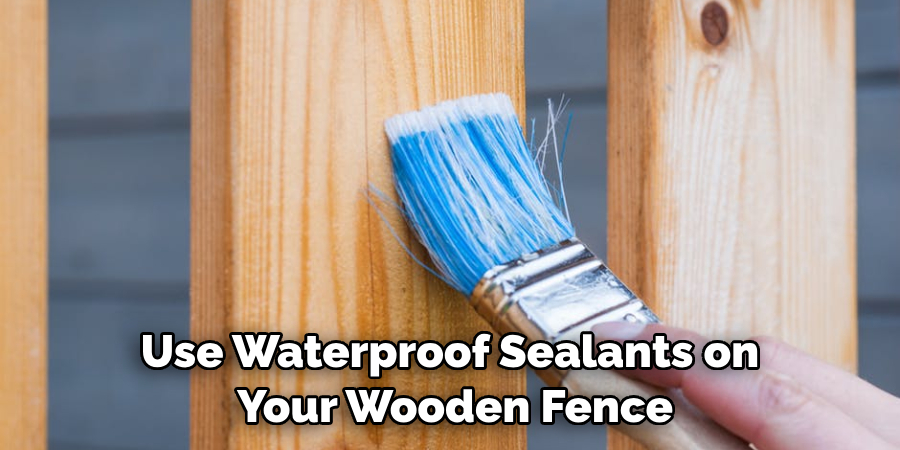
Overall, with the right maintenance and protection, you can keep your wooden fence looking beautiful for years. So, take the necessary steps to protect and preserve your fence, and you will be rewarded with a strong and beautiful structure!
Conclusion
In conclusion, repairing wooden fence rails is a great way to maintain your property’s sturdy and aesthetic fence. It also helps keep animals in and out of your backyard that are not supposed to be there. Nonetheless, it is important to stay aware of the process of repairing a wooden fence.
Knowing which materials, tools, and methods are used is essential. Working with wood can be dangerous if done incorrectly, requiring an individual to handle potentially hazardous tools. Properly using these tools can help an individual accomplish a successful repair job quickly and efficiently.
Most importantly, safety precautions should always be taken when working with wood due to its nature of splintering, chipping, or breaking any time something goes wrong. These points will ensure repairs to your wooden fence rail are done correctly and safely every single time.
Hopefully, the article on how to repair wooden fence rails has helped you gain knowledge and confidence on how to repair your own fence. With these tips, you can be sure your fences will stay safe and secure for years. Thanks for reading!

